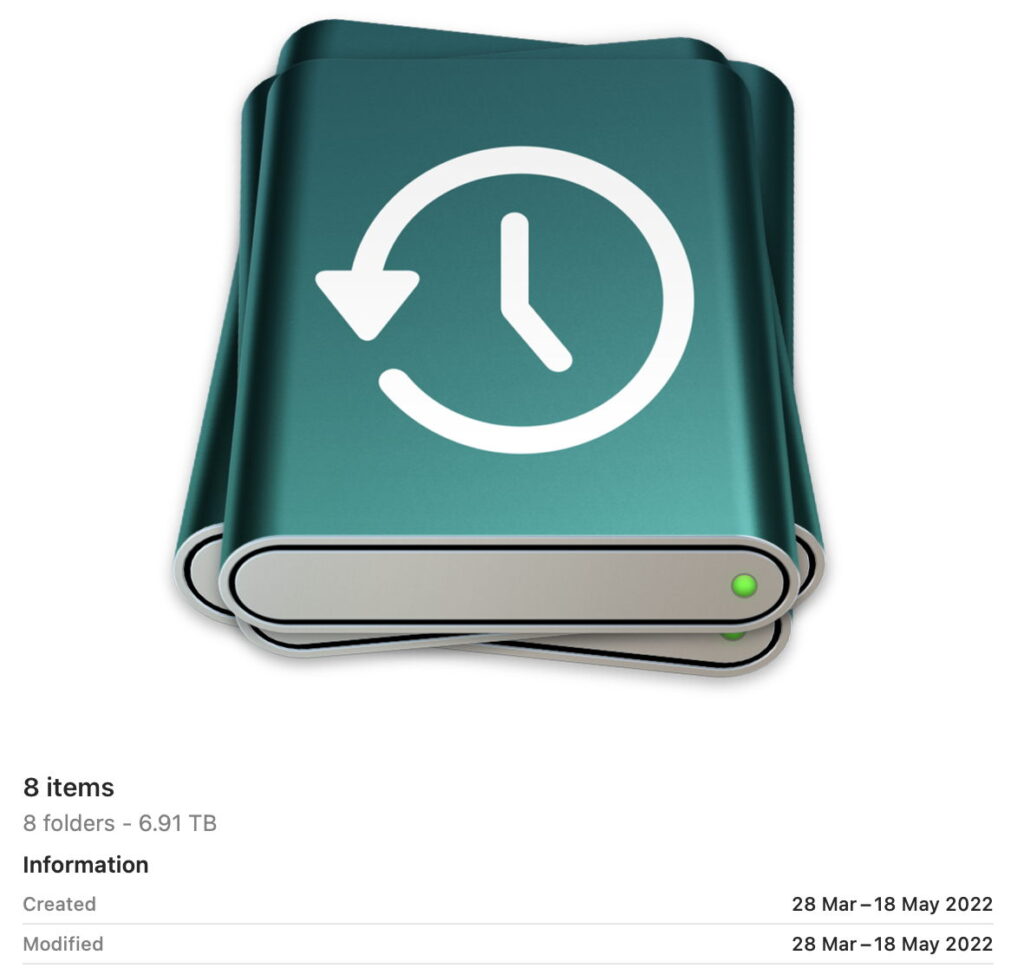Where are the sanity checks?

Over the last year or so, have you looked in disbelief at a number shown on your Mac? Has that number been so outrageously wrong that you’ve accused it of being drunk, or even insane?
This happened to me a few days ago. I was quietly trying to delete some old Time Machine backups, and had selected quite a few of them when the Finder assured me that they came to a total of over 60 TB, and that was on a 2 TB SSD. I was a bit too slow to catch the Finder’s countdown earlier as it deleted them, but here’s a screenshot from a little later, when there was only 6.91 TB to go. On a 2 TB SSD. Clearly, the Finder was so full of its bogus accuracy that it didn’t pause to check whether the total it had come up with made any sense.
Earlier this year I had a similar experience when the Finder suddenly assured me that my internal SSD had 83.71 GB of purgeable space, giving it a total of 227.83 GB available.
We mulled over its arithmetic for some time here, but all that purgeable space vanished as suddenly as it had arrived, and the mystery remained unsolved.
I went to school in the days when the only computers were huge and very special. One of the great innovations while I was there was the introduction of electronic calculators, then costing the equivalent of a couple of thousand pounds/dollars/euros today. When you’re using traditional methods of calculation, one of their mainstays is the sanity check, to ensure that the answer you come up with is in the right ballpark.
If I were to ask you how tall you are in feet, you might respond with “six feet”. If you’re used to working in Imperial measures, converting that to centimetres courts spectacular error, so I make a rough estimate using the approximation that one foot is about 30 cm. If you tell me that you’re 18 or 1,800 cm tall, then I know those are an order of magnitude out. Your answer then fails its sanity check.
If that sounds obvious, then come along with me as I prepare the captions for paintings to show in an article here. You’d be horrified at the number of times that they’re described as being around 3.54 mm in height. This would make that painting even smaller than the miniatures painted by Goya during his final years, down to around 5 cm or 50 mm square, on tiny slivers of ivory.
One of the confounding factors is false precision: some of the worst offenders here are weather forecasting apps. Ask a real meteorologist how much rain is likely to fall here next Saturday, and they’d probably talk in terms of it being fairly wet to start with. A weather-forecasting app might say 8 mm, which is very precise, but then offer only a 60% probability of any rain falling on that day. A few days ago, Apple’s Weather app was forecasting 44 mm to fall on Wednesday, but currently claims that 10 mm will fall, with a probability of 90% of any rainfall. While 44 mm might be not uncommon for some upland parts of Britain, here it would be an extremely unusual and severe event, yet Weather didn’t bat an eyelid in making that forecast.
Returning to the Finder and its insane claim of deleting over 60 TB of snapshots, it would have been less precise but more accurate if it had shown an unlabelled progress bar instead. A little sanity checking should have revealed that claiming that amount of space could exist on a 2 TB SSD was impossible. Instead of feigning accuracy, it should have strived for something less absurd.
Performing such sanity checks takes little time, and helps maintain the user’s belief and trust, one of the most important aims of any user interface.
I wish you a very Merry Christmas, just in case the Calendar app has got that one right.
